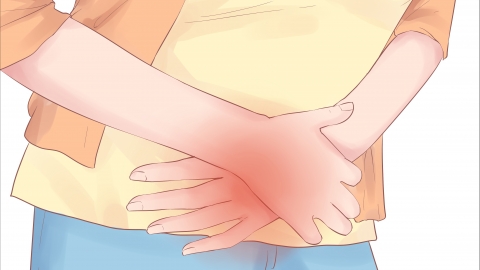What causes increased pain after applying heat?
Pain may worsen after heat application due to excessively high temperature, prolonged duration, intestinal gas accumulation, ureteral stone impaction, or the acute phase of acute enteritis. Adjusting heat application methods, relieving gas, and medication can help alleviate symptoms. If pain persists or is accompanied by high fever, vomiting, or other severe symptoms, prompt medical attention is necessary.

1. Excessively high heat temperature: When the heat applied exceeds 50°C, it may irritate the local skin and subcutaneous tissues, worsening mucosal or tissue congestion at the affected site and increasing pain, possibly causing redness of the skin. It is recommended to immediately discontinue heat application, clean the area with lukewarm water, and subsequently maintain the heat temperature between 40–45°C for no more than 20 minutes per session.
2. Prolonged heat application: Continuous heat application exceeding 30 minutes keeps local tissues in a high-temperature state for extended periods, impairing blood circulation and potentially triggering excessive contraction of smooth muscles, thereby intensifying pain; some individuals may also experience abdominal bloating. It is advised to shorten each heat session to 15–20 minutes, with at least a 1-hour interval between sessions, avoiding consecutive applications.
3. Intestinal gas accumulation: Excessive gas buildup in the intestines may lead to increased intestinal motility after heat application, causing gas movement that stimulates the intestinal wall and exacerbates pain, often accompanied by noticeable bloating and difficulty passing gas. Under medical guidance, patients may use medications such as domperidone tablets, simethicone emulsion, or mosapride citrate tablets to relieve symptoms.
4. Ureteral stone impaction: When a stone becomes lodged in a narrow segment of the ureter, enhanced ureteral peristalsis from heat application increases friction between the stone and ureteral mucosa, worsening pain. This may be accompanied by referred pain in the lower back and hematuria. Under medical supervision, medications such as tamsulosin hydrochloride sustained-release capsules, indomethacin enteric-coated tablets, or Shenshitong granules may be used to manage symptoms.
5. Acute phase of acute enteritis: During an acute attack of enteritis, the intestinal mucosa is congested and edematous. Heat application accelerates local blood flow, aggravating the inflammatory response and increasing pain, often accompanied by frequent diarrhea and mucus in the stool. Follow medical advice to use medications such as norfloxacin capsules, compound diphenoxylate tablets, or oral rehydration salts (Type I) to improve symptoms.
Daily care should include keeping the affected area warm and avoiding thermal or cold stimulation; eating a light, easily digestible diet while reducing intake of gas-producing foods; engaging in mild physical activity after meals to promote intestinal motility; and maintaining regular sleep patterns to strengthen overall immunity.







